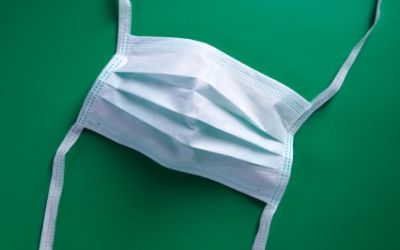New Pandemic Flu and PPE Report is Released

The National Institute for Occupational Safety and Health (NIOSH) and the National Personal Protective Technology Laboratory (NPPTL) announce the release of the Institute of Medicine (IOM) report, "Preventing Transmission of Pandemic Influenza and other Viral Respiratory Diseases: Personal Protective Equipment for Healthcare Personnel, Update 2010 (2011)."
In 2007, NIOSH requested that the the IOM investigate the urgent need to address the lack of preparedness regarding effective PPE for use in an influenza pandemic. The resultant 2008 report is available at http://www.nap.edu/catalog.php?record_id=11980. The 2011 report is provided as an update to assess progress achieved over the past three years. The report is available for download at www.iom.edu/reports.
In 2009, the H1N1 influenza pandemic brought to the forefront the many unknowns about the virulence, spread, and nature of the virus, as well as questions regarding personal protective equipment (PPE) for healthcare personnel. Researchers still have much to learn about how influenza is transmitted from person to person, and one major question that arose during the H1N1 influenza pandemic was determining what types of PPEparticularly face masks or respiratorsare needed to protect healthcare personnel from disease transmission. Because the focus of research efforts often shifts to other health concerns between pandemics, continuing the research momentum is critical to ensure that the nation is prepared for the next influenza pandemic.
In light of the unanswered research questions following the 2009 H1N1 influenza pandemic, the National Personal Protective Technology Laboratory at NIOSH asked the IOM to assess the progress of PPE research and to identify future directions for PPE for healthcare personnel. While the IOM finds that there are gaps and deficiencies in the research about PPE use in healthcare, there is sufficient knowledge to recommend a four-pronged strategy for effective PPE use:
- Deliberate planning and preparation at the leadership and organizational levels
- Comprehensive training for all personnel, including supervisors and managers
- Widespread and convenient availability of appropriate PPE devices
- Accountability at all levels of the organization
The IOM also offers several recommendations for continuing the momentum of PPE research that are detailed in the report and the report brief. The more scientists and researchers know about how to maximize the effectiveness of PPE and its use, the more prepared we will be for the next influenza pandemic.
The committee conducting the investigation into this issue identified a set of criteria as a starting point for decisions on PPE selection and use. They agreed that PPE for healthcare workers should:
- Reduce the risks of disease and injury to healthcare personnel
- Minimize negative interactions with or effects on patients and their families
- Be acceptable and usable by healthcare personnel in their daily tasks
- Be practical regarding issues of cost, time and training to use
- Be appropriate to the occupational risk being encountered
CDC HICPAC Considers New Airborne Pathogen Guidelines Amid Growing Concerns
November 18th 2024The CDC HICPAC discussed updates to airborne pathogen guidelines, emphasizing the need for masks in health care. Despite risks, the committee resisted universal masking, highlighting other mitigation strategies
Breaking the Cycle: Long COVID's Impact and the Urgent Need for Preventative Measures
November 15th 2024Masking, clean air, and vaccinations are essential in combating COVID-19 and preventing long-term impacts, as evidence mounts of long COVID's significant economic, cognitive, and behavioral effects.
The Critical Role of Rapid Diagnostics in Antibiotic Stewardship
November 6th 2024Rapid diagnostics enhance patient outcomes by enabling prompt, targeted treatments, reducing inappropriate antibiotic use, and combating antimicrobial resistance through informed clinical decisions and stewardship programs.